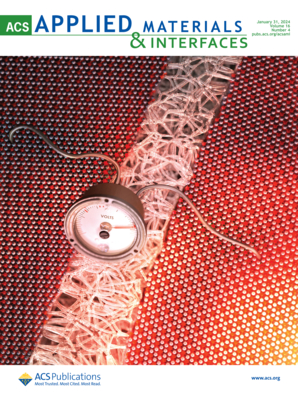Benzophenone-Based Polymers and Covalent Organic Framework for Photocatalytic Molecular Oxygen Activation
IF 8.3
2区 材料科学
Q1 MATERIALS SCIENCE, MULTIDISCIPLINARY
引用次数: 0
Abstract
Photosensitization by photoactive materials requires well-designed molecular engineering to enable continuous photochemical processes. However, developing a heavy-atom-free (HAF) strategy to enhance the photoactivity of photosensitizers remains a significant challenge. In this study, we introduce a novel strategy to enhance photosensitization by incorporating benzophenone-rich components into 3D polymers (BQP1 and BQP2) and the 2D covalent organic framework (BQ-TMT COF). This incorporation accelerates both charge carrier separation and intersystem crossing, thereby significantly improving photo-to-chemical energy conversion and electron transfer reactions. Notably, the crystalline BQ-TMT COF enables efficient photocatalytic molecular O2 activation, producing both 1O2 and O2·– with high efficiency and recyclability. It demonstrates selective photocatalytic oxidation in 1O2-mediated sulfide transformations. Moreover, the material performs well in O2·–-mediated oxidation, including the hydroxylation of boronic acids and oxidation of amines to imines. The BQ-TMT COF-based photoelectrode generates a photocurrent of approximately 20.7 μA·cm–2 at 0.4 V vs RHE and achieves a high photocatalytic hydrogen production rate. Our study demonstrates a HAF heterogeneous photosensitizer with efficient photoactive small molecule activation through molecular engineering.

光催化分子氧活化的二苯甲酮基聚合物和共价有机框架
光活性材料的光敏化需要精心设计的分子工程来实现连续的光化学过程。然而,开发一种无重原子(HAF)策略来增强光敏剂的光活性仍然是一个重大挑战。在这项研究中,我们引入了一种新的策略,通过将富含二苯甲酮的成分加入到3D聚合物(BQP1和BQP2)和2D共价有机框架(BQ-TMT COF)中来增强光敏性。这种结合加速了载流子分离和系统间的交叉,从而显著改善了光化学能量转换和电子转移反应。值得注意的是,晶体BQ-TMT COF能够实现高效的光催化分子O2活化,高效地产生1O2和O2·-,并且具有可回收性。它证明了在o2介导的硫化物转化中选择性光催化氧化。此外,该材料在O2·介导的氧化中表现良好,包括硼酸的羟基化和胺氧化为亚胺。BQ-TMT cof基光电极在0.4 V vs RHE下产生约20.7 μA·cm-2的光电流,实现了较高的光催化制氢速率。我们的研究通过分子工程证明了一种具有高效光活性小分子活化的HAF非均相光敏剂。
本文章由计算机程序翻译,如有差异,请以英文原文为准。
求助全文
约1分钟内获得全文
求助全文
来源期刊

ACS Applied Materials & Interfaces
工程技术-材料科学:综合
CiteScore
16.00
自引率
6.30%
发文量
4978
审稿时长
1.8 months
期刊介绍:
ACS Applied Materials & Interfaces is a leading interdisciplinary journal that brings together chemists, engineers, physicists, and biologists to explore the development and utilization of newly-discovered materials and interfacial processes for specific applications. Our journal has experienced remarkable growth since its establishment in 2009, both in terms of the number of articles published and the impact of the research showcased. We are proud to foster a truly global community, with the majority of published articles originating from outside the United States, reflecting the rapid growth of applied research worldwide.
 求助内容:
求助内容: 应助结果提醒方式:
应助结果提醒方式:


